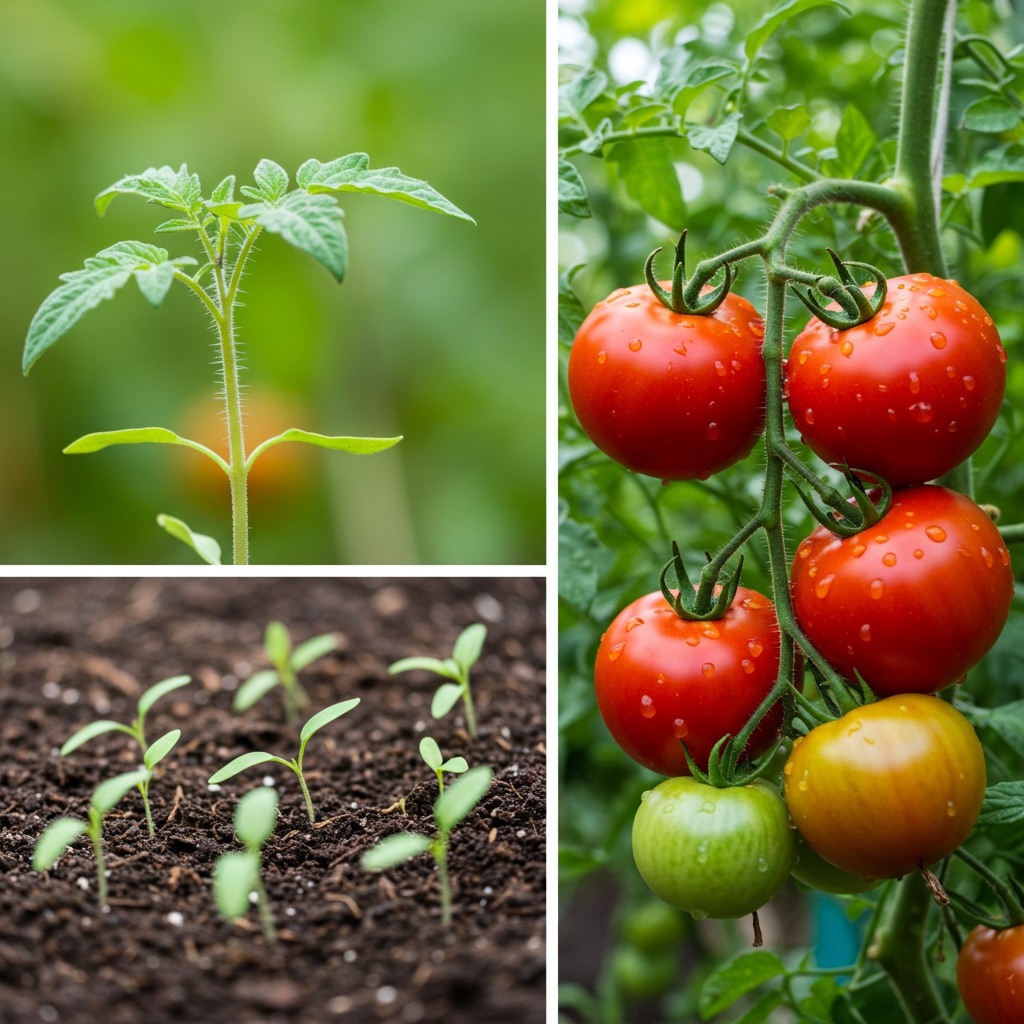ADVERTISEMENT
23 Common Additives for Tomato Planting Holes to Boost Growth and Flavor 🍅🌿
When it comes to growing juicy, flavorful tomatoes, the key to success often lies in the soil. While many gardeners focus on sunlight and watering, it’s the foundation—the soil—that truly gives your tomatoes the nourishment they need. One of the best ways to give your tomato plants the best start is by enriching the soil in the planting hole with specific additives. These additives can boost growth, improve flavor, and ensure a healthier harvest.
Here are 23 common additives that can be used in tomato planting holes, each offering unique benefits to your plants:
1. Compost
Compost is a garden staple, providing a rich source of organic matter that helps retain moisture, improve soil texture, and introduce beneficial microbes that support plant health.
2. Fish Emulsion
This organic fertilizer made from fish is high in nitrogen, which promotes healthy leaf growth and overall plant vitality. It’s perfect for tomatoes needing a nutrient boost early in the growing season.
3. Bone Meal
Bone meal is rich in phosphorus, which supports strong root development and flower production. It’s perfect for tomatoes, which need a solid root system to grow tall and produce bountiful fruit.
4. Blood Meal
Blood meal is high in nitrogen, making it great for promoting green, leafy growth. However, be cautious about using too much, as it can lead to excess foliage without enough fruit.
5. Eggshells
Crushed eggshells provide calcium, which helps prevent blossom end rot—a common issue in tomatoes. Adding them to the planting hole helps maintain healthy tomato plants.
6. Epsom Salt
Epsom salt is rich in magnesium, which is crucial for photosynthesis and overall plant health. It can help tomatoes thrive, especially in soils lacking magnesium.
7. Worm Castings
Worm castings are an excellent source of organic matter and beneficial microbes. They improve soil structure, enhance nutrient absorption, and help maintain healthy root systems.
8. Seaweed or Kelp Meal
Seaweed is packed with trace minerals, natural growth hormones, and micronutrients that promote healthy, strong plants. Kelp meal is great for improving soil structure and boosting flavor.
9. Dolomitic Lime
If your soil is too acidic, dolomitic lime can help balance the pH. It also adds magnesium and calcium, both essential for tomato health and fruit development.
10. Alfalfa Meal
Alfalfa meal provides nitrogen, phosphorus, and potassium, all essential for healthy tomato growth. It also contains trace minerals and plant growth stimulants, making it an excellent all-around soil amendment.
11. Mycorrhizal Fungi
These beneficial fungi form a symbiotic relationship with plant roots, enhancing nutrient absorption and helping the plant access phosphorus, which is crucial for fruit development.
12. Green Manure
Planting a cover crop like clover or vetch before planting tomatoes can improve soil fertility and organic matter content. Once the crop is turned under, it enriches the soil and provides a slow release of nutrients.
13. Fish Meal
Fish meal is rich in nitrogen and other essential nutrients that support growth. It’s a slow-release fertilizer, providing a steady nutrient source throughout the growing season.
14. Wood Ash
Wood ash is a great source of potassium and calcium, which help with tomato flavor and overall plant health. It also helps raise the pH of acidic soils, making it useful in certain soil types.
15. Coffee Grounds
Used coffee grounds add nitrogen and help improve soil structure. They also attract earthworms, which are excellent for aerating the soil. Just be sure to avoid adding too much, as coffee grounds can acidify the soil over time.
16. Mushroom Compost
Mushroom compost is rich in organic matter and nutrients that tomatoes love. It helps retain moisture and provides a steady source of nutrients as the season progresses.
17. Peat Moss
Peat moss is great for improving soil texture and moisture retention. It’s particularly useful for sandy soils, helping them retain water and providing a loose, airy environment for tomato roots.
For Complete Cooking STEPS Please Head On Over To Next Page Or Open button (>) and don’t forget to SHARE with your Facebook friends
